
The city of Munich was surrounded by fortifications, including city walls with gates, from the 12th century until the late 18th and early 19th centuries.
The area, originally surrounded by the town walls, was the historic starting point for the growth of the city.
Currently, once a walled town, is a historic old town of Munich, which is the center and the main tourist area of Munich.
During the history of Munich was surrounded by two city defense system: first, and later second city walls.
The first fortifications were built starting in 1175, when Henry the lion.
At the end of the 12th century was built the first city wall with five gates, which had created a water-filled moat.
From the first city fortifications to the present time nothing has remained.
City gates the first fortifications of the city:
- Swainger gate (Schwabinger tor) were approximately in the place where today there are streets Keplerstrasse (Schäfflerstrasse) and weinstraße (Weinstraße).
The gate was a tower with an arched passageway. The gate was demolished in 1691;

- gate Front Swainger (Vordere Schwabinger Tor) were approximately where today there are streets Hofgren (Hofgraben) and Dienerstrasse (Dienerstraße).
The gate was a tower with an arched passageway. It was demolished around November - December 1842. The basement vaults of the gate it is still located under the North-East corner of Marienhof (Marienhof);
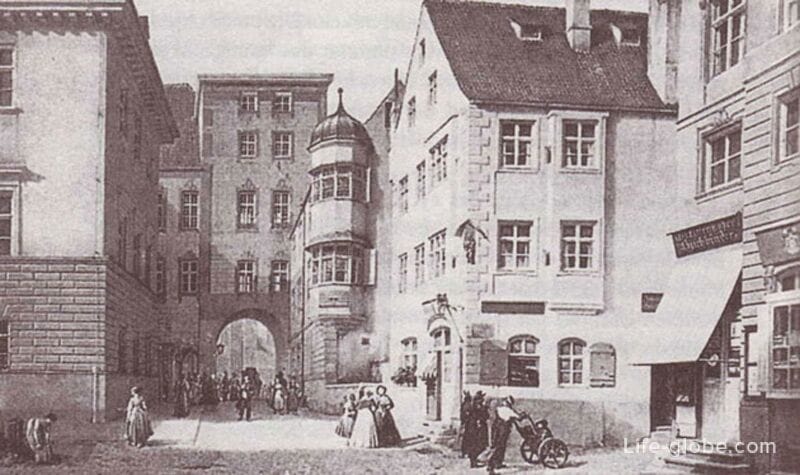
- gate Alburger (Talburgtor) was a simple tower with a small arched passage.
In the years 1392-1394 gate was integrated into the original structure of the Old town hall tower. In subsequent town hall was reconstructed and transformed.
The old town hall still exists today. The northern facade of the town hall faces the central square of the city - Marienplatz;
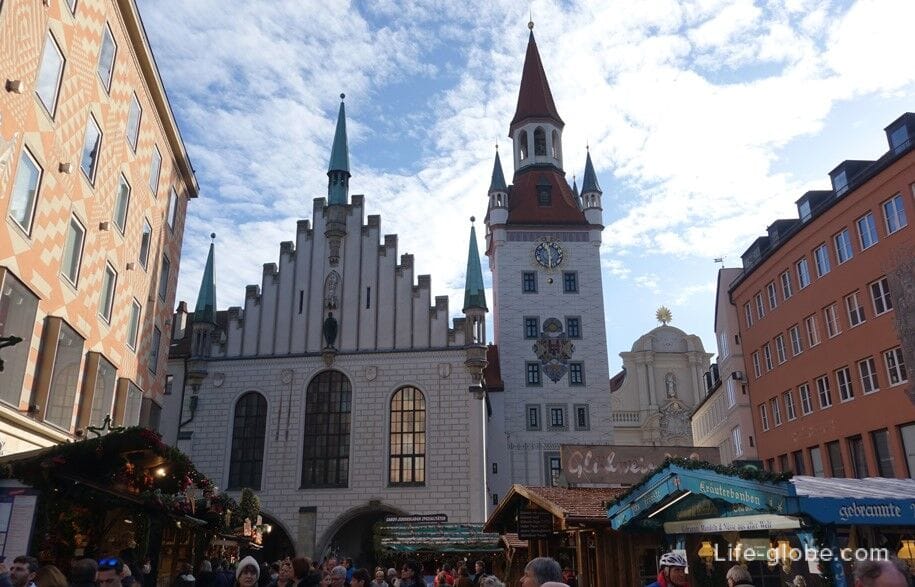
- Sendlinger gate (Sendlinger Tor) was located on the present expansion between the streets Rosenstraße (Rosenstraße), and Verbergen (Färbergraben).
It was a simple tower with a passage. In 1319 gate tower was included in the townhouse of the family of the upper middle classes Pütrich. The tower was demolished in 1808.
Today the approximate location of the former towers said house Ruffini (address: Rindermarkt, 10). The house has a memorial note with a picture of a tower (the mural of Charles Valera) and the following text: "Ruffini Tower, built in 1175, demolished 1808". However, there is no evidence that 1175 year was the date of construction of the gates because the gates themselves were first mentioned officially somewhere in the year 1289;

- gate Kaufinger (Kaufingertor) was located approximately on the place where today there are streets Kaufingerstrasse (Kaufingerstrasse), Herbagreen (Färbergraben) and Augustinerstrasse (Augustinerstrasse).
Gates as well as all the others, was a tower with a passage. After the construction of the outer city wall gate tower served as a residential tower family Kaufinger and was named in honor of them. The gate was demolished in 1479 and rebuilt in the late Gothic style until 1484. In 1510 the gate tower received external clock and rich painted frescoes. Because of this, the tower is often called "the Beautiful tower". The tower was demolished in 1807.
Today, about the spot where stood the gate and tower, is the so-called "House of beautiful towers" (Haus zum Schönen Turm). The location of the former towers marked in the pavement near the house (am Boden vom Umriss "SchönenTurm"), and a bronze plaque on the arcades of the building shows an image of the former towers.
On the corner of the house the beautiful tower (intersection of Kaufingerstrasse and Augustinerstrasse) is located a sculpture depicting the figure of a man with hoisted on the shoulders of the tower. With this sculpture, there is one little-known Munich city story about the jeweler who was executed for theft, which did not commit. Read more about house beautiful tower and the Munich legend...
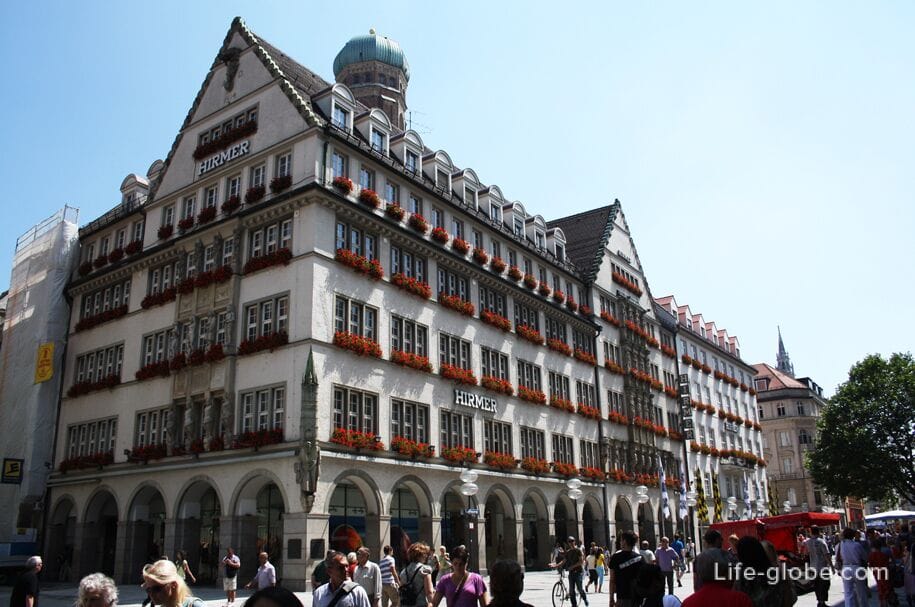
After Ludwig II moved his residence to Munich (at that time rulers was located in today's Old courtyard), the city began to grow rapidly. So Ludwig began the expansion of the city walls.
The construction of the second ring began in 1285 and was completed only when Ludwig IV, completed in 1337, the construction of the last gate - Isartor.
The fortifications consisted of a wall with 8 gates (4 of which are) + the two gates had no special value for entry/exit, as well as numerous towers to monitor the surrounding space and protect the wall. The second city wall was surrounded by a moat of water.
The strengthening of the second city walls were largely destroyed and demolished in the late 18th - early 19th centuries.
Today, second city's fortifications remained only small residues, including three of the four original main gates. All gates are now reconstructed in a simplified form.
Sendlinger tor (Sendlinger Tor / the tor Sendlinger) located in the eponymous square, in the southern part of the old town, at the end of the street Sendlinger straße underground station (Sendlinger Str.).
Gates has a large Central arch, two flanking towers with arched doorways and part of the inner wall. Read more about the Sendling Gate...
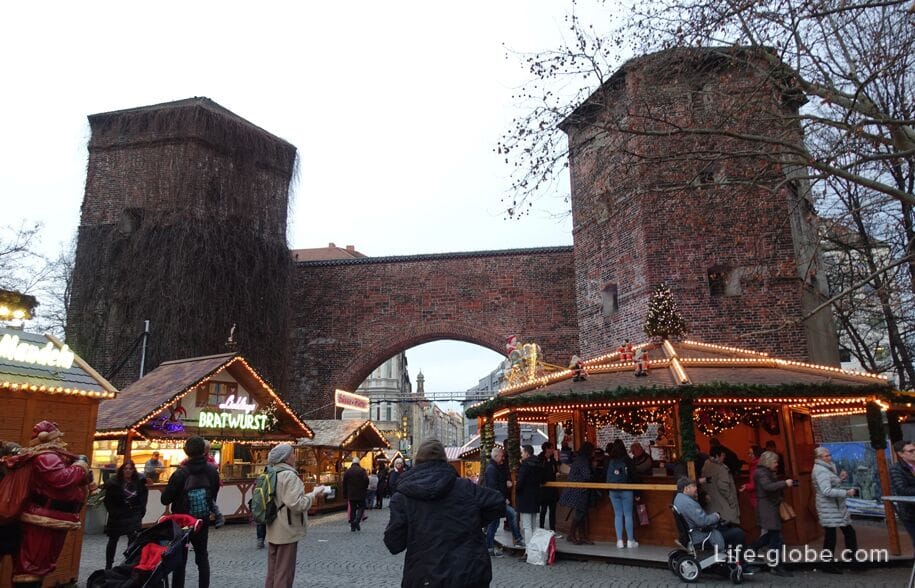
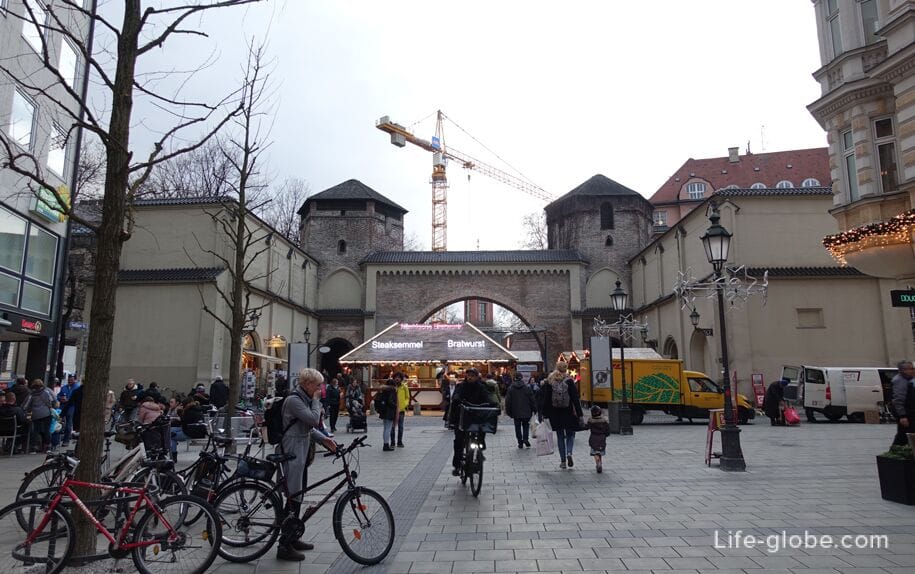
Karlovy gate (Karlstor / After) mark the Western border of the historic old town of Munich. To the East pedestrian gate leads to the pedestrian area of the city - a busy shopping street Neuhauser Strasse (Neuhauser Straße), and in a westerly direction output to Karlsplatz.
The gates are two small pseudo-Gothic towers connected by a bridge. Portals (entrances) at the gate made in the form of three tall Lancet arches. Read more about Karlovy gate...
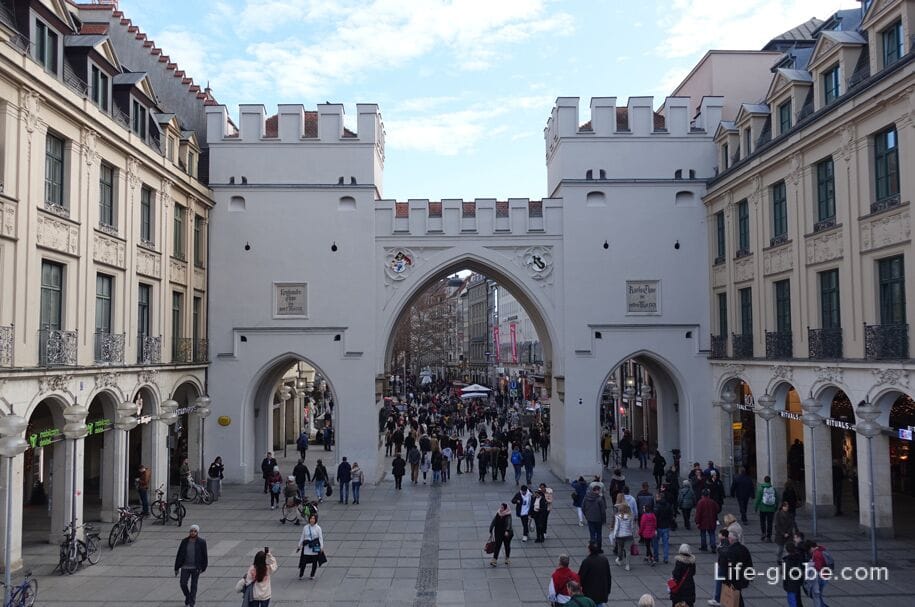
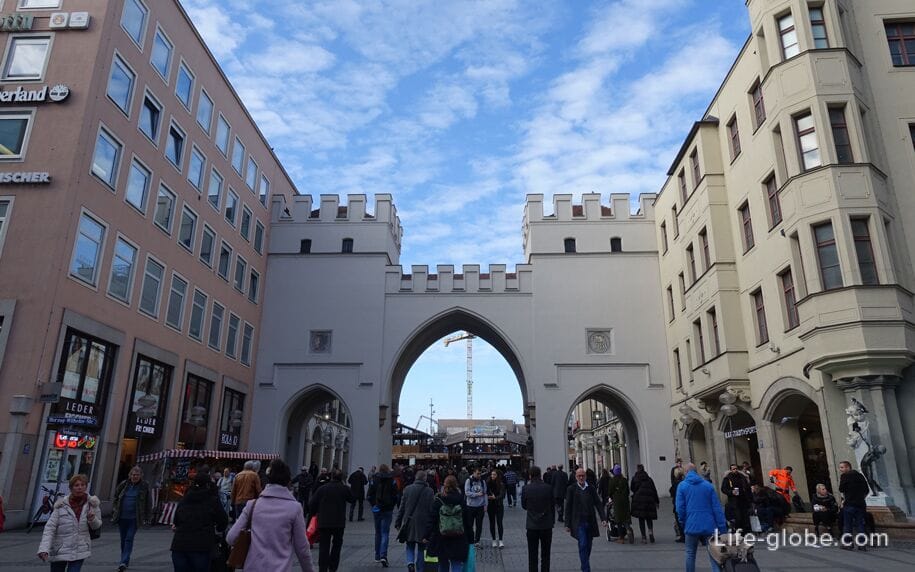
Isartor gate (Isartor / Isartor) was named after the river ISAR (Isar), the road to which passed (and passes) from the center of the city through the gates.
They are located on the Eastern edge of Munich's old town, at the address: street Tal, 50 (Tal).
Today consist of: rectangular clock tower; the trapezoidal inner courtyard, which are arched passages; the backyard is surrounded by a wall, with two octagonal side towers with arched openings (passages).
On the East wall gate is the famous fresco "the triumph of Ludwig IV the Bavarian, after his victorious battle against Frederick III the Handsome of mühldorf in 1322".
In the lateral towers of the gate is the Museum of Karl Valentin (Valentin Karlstadt Musäum), dedicated to the Bavarian comedian Karl Valentin and his colleague, the actress Liesl Karlstadt. Read more about the Isartor gate and the Museum.

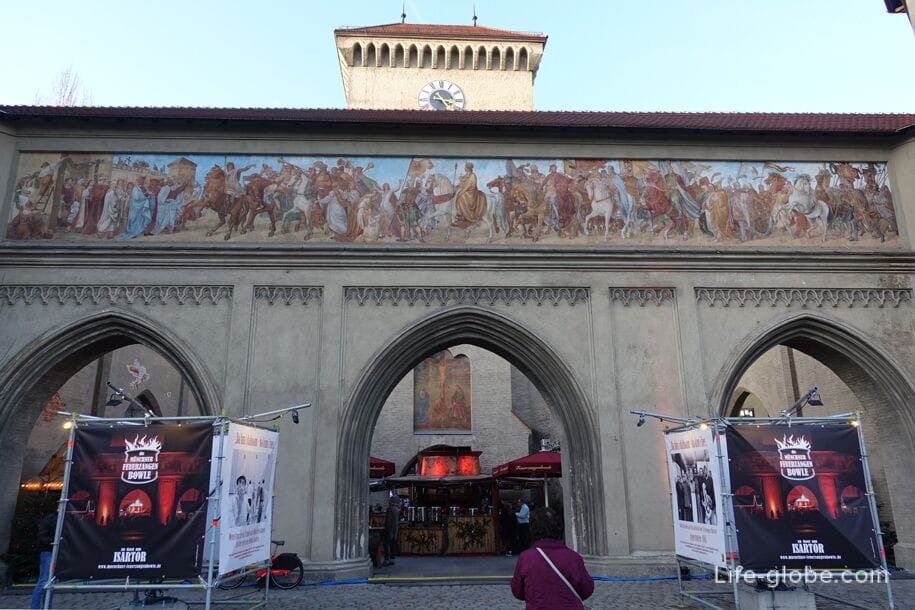
The fourth main gate was the Swabian gate (Schwabinger Tor), which were in the North, and, together with the adjoining wall, was demolished starting in 1791, to the construction of the new area - present area of Odeonsplatz.
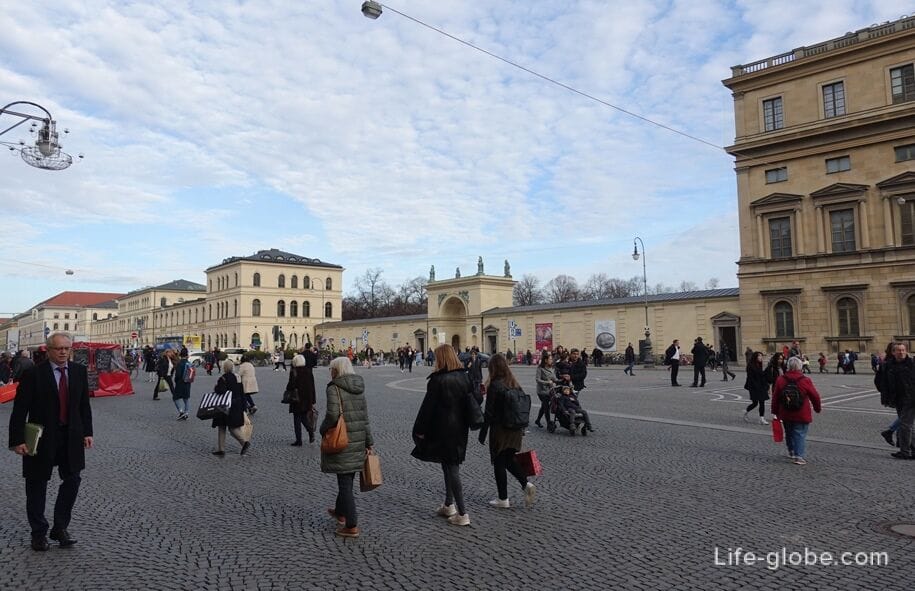
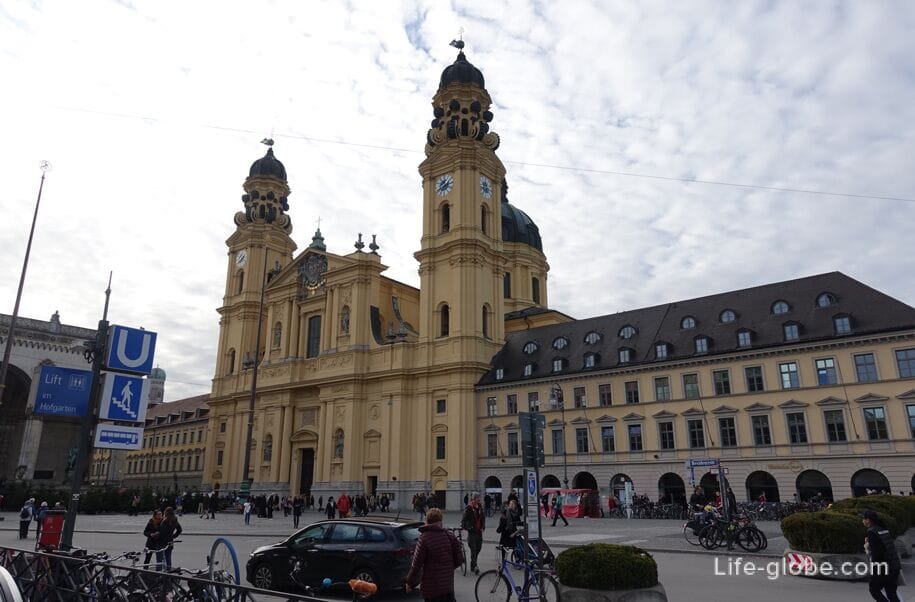
The other gates were demolished and now don't exist:
- gate Castor (Kosttor or Kostthor) was located in the place of the present square "At the gate" (Am Castor / Am Kosttor) and was demolished in 1872. On the wall of one of the houses surrounding the square, is a plaque;

- gate Teccenter (Taeckentor) was located approximately in that place where today there are streets Sterneckstrasse (Sterneckerstrasse) and Westenriederstrasse (Westenriederstrasse). The gate was demolished somewhere in the years 1866-1867;
- gate Einlassen (Einlasstor / Entrance gate) was located approximately in that place where today the Prelate-Zistl Strasse (Prälat-Zistl-Strasse) is connected with the street Rosental (Rosental).
Originally the gate was called Shepperton / Schiffertor (also Zyferstor). The gate was demolished in 1826.
On the house at the address: Prelate-Zistl-Straße 4, placed a plaque with information about the former gate;
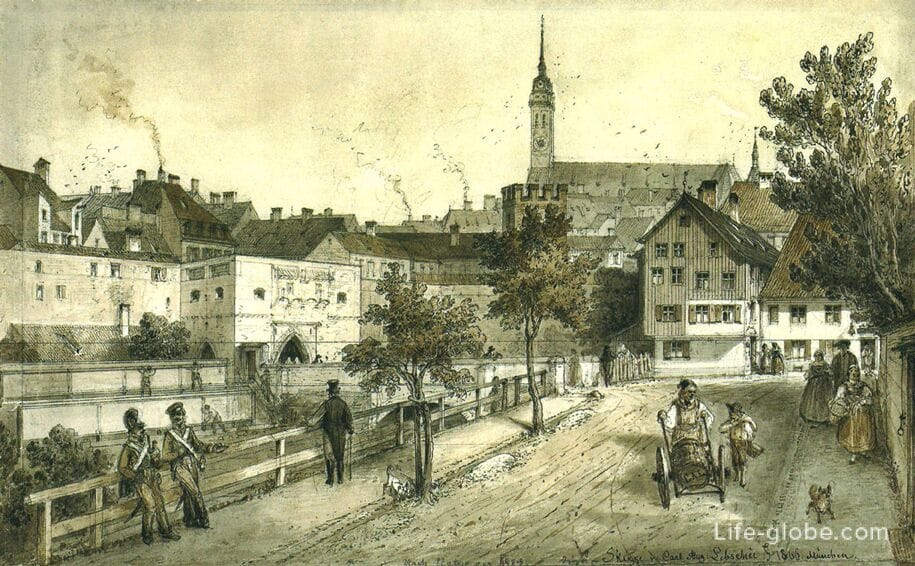
- gate Angerton (Angertor) was located in the South of the city, about the place where today is the intersection of the street Unterer anger (Unterer Anger) and An der Hauptthema (An der Hauptfeuerwache). The gate tower was demolished in 1807, and the front gate in 1869.
Today, the site of the gate stands a high-rise building "skyscraper City" (Städtisches Hochhaus), which is also called the "Old technical town hall". On the first floor of the building has arches, which are somewhat similar to the passageways of the gates;
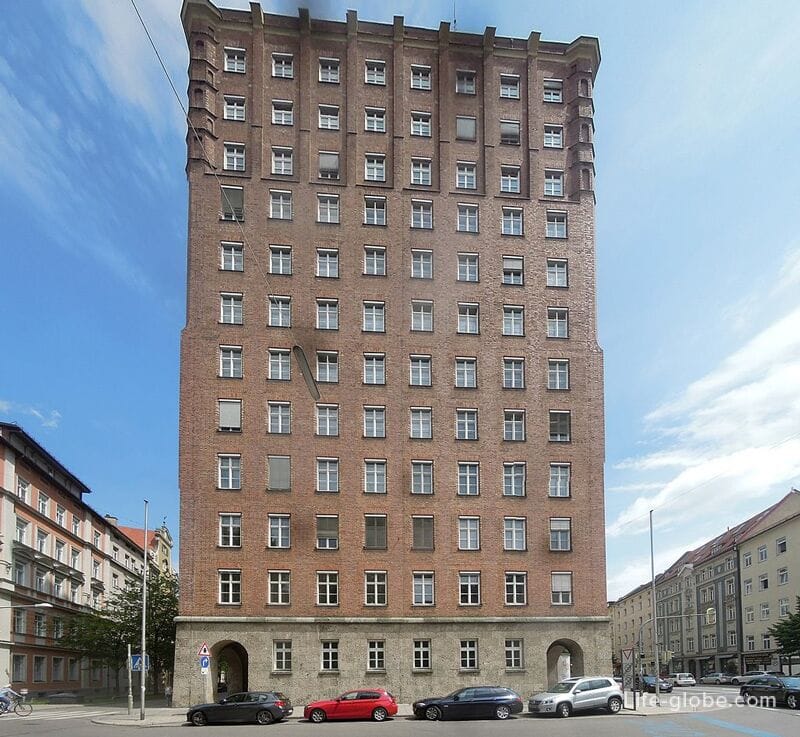
- gate NovaStor (Neuvesttor) was located in the North, a little East from the Swabian gate. Served as a side gate and had no special meaning to the movement.
The result of turning space at the gate of the residential Palace of the governors (now the Munich residence) and the creation of an internal courtyard to the North from the residence, gates, lost its fortification value and since 1644 was not displayed on the city map;
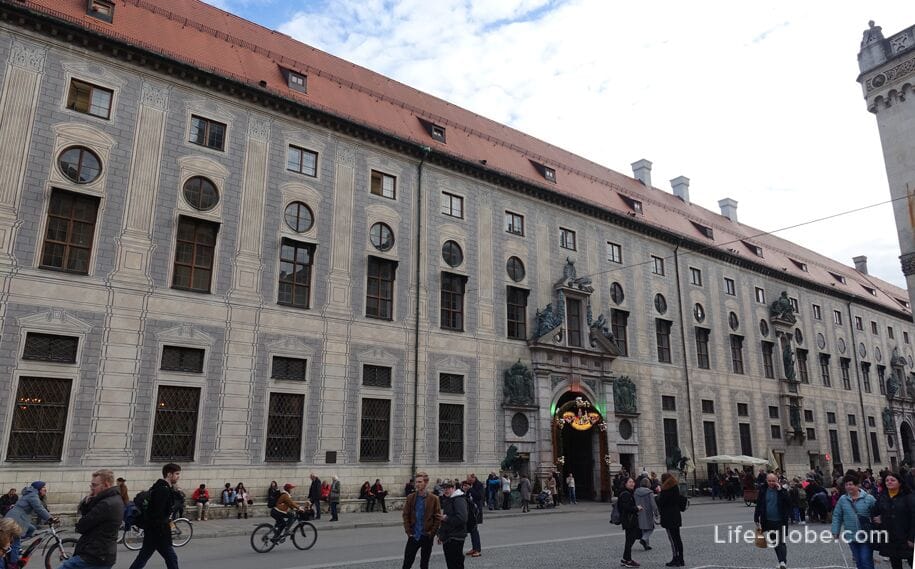
- The Ducal city gate (Herzogenstadttor) was located on the West of the city, just North of Karlovy vary the gate, approximately where today is located the pavilion of BMW Lenbachplatz (MINI Pavillon, Lenbachplatz).
The gate had no special significance for the city and has not been used. The exact date of the demolition of the gate is unknown, but I suspect the 19th century.
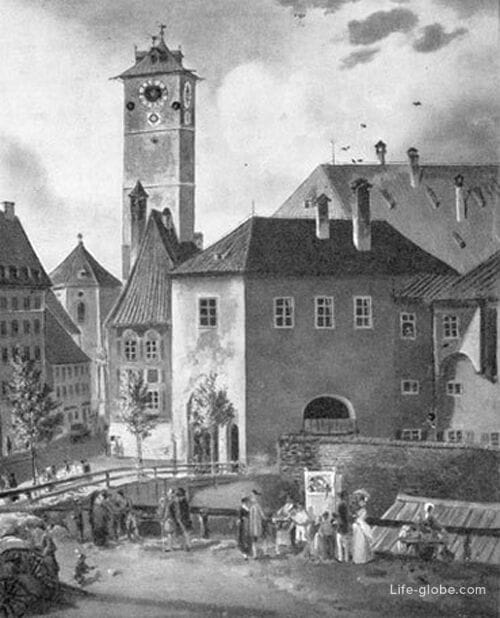
Within Munich's old town preserved small remnants of the former city fortifications:
- the remains of the tower Prince (Prinzessturm), which was a round gun tower enters the second defensive system of Munich.
Princesstard was mentioned in 1473 and 1490 and was once the tower of Ablinga (Scheiblingturm). Since the 19th century, it is called a "Tower Prince," without any specific historical references.
The tower was demolished in 1892.
Today, small remnants of the tower are open to the public.
Residues located in the courtyard of the building at the address: street Thomas-Wimmer-Rin 3 (Thomas-Wimmer-Ring 3). Read more about the remains of the tower Prince of...
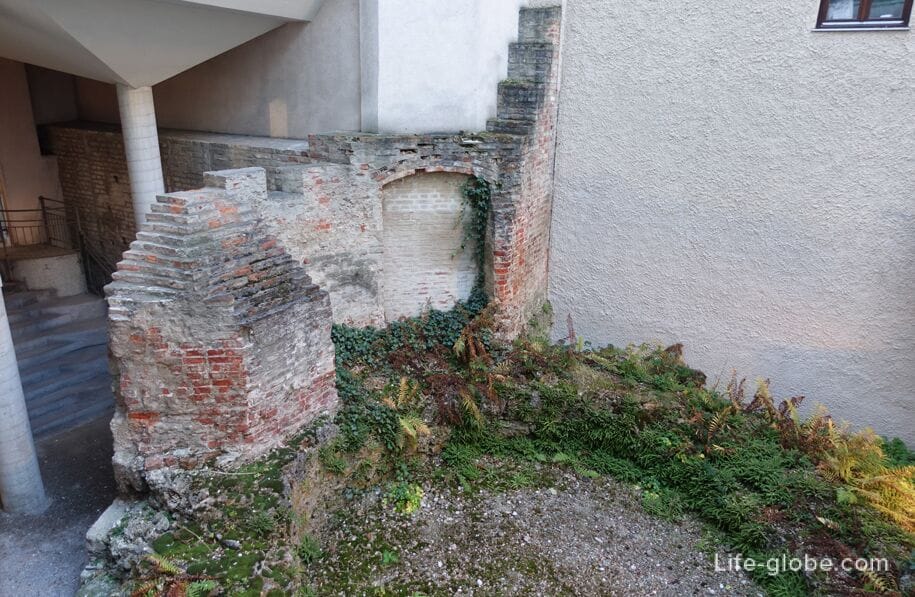
- house Winderemere (Vindelikerhaus), in the South wall of which is embedded the remnants of the former watchtower Lyuga (Lueg ins Land), part of the second wall of the city.
The tower was demolished in 1807.
Only preserved part of the North wall of the tower, which was built in Vindelicorum and today is part of the South wall of the house.
On the house Vindelici is a fresco (figure) and the memorial entry, which confer approximate and figurative understanding of how previously looked watch tower and the defensive wall. Home address: Marienstrasse, 21 (Marienstraße).
In the adjacent building, at the address: Lyug ins land 5 (Lueg ins Land) also have an information plate. And in front of the house is a rough diagram of the place where previously there was a tower Lyuga. This place highlighted in red brick on the sidewalk, the outer wall of the building. Read more about home Winderemere and the tower Lyuga...

- on the street Ungerstrasse (Jungfernturmstraße) is a small portion of the ruins of the former second city wall of Munich (Ruins of Munich's second city wall). Ruins are partially included in part of a modern building.
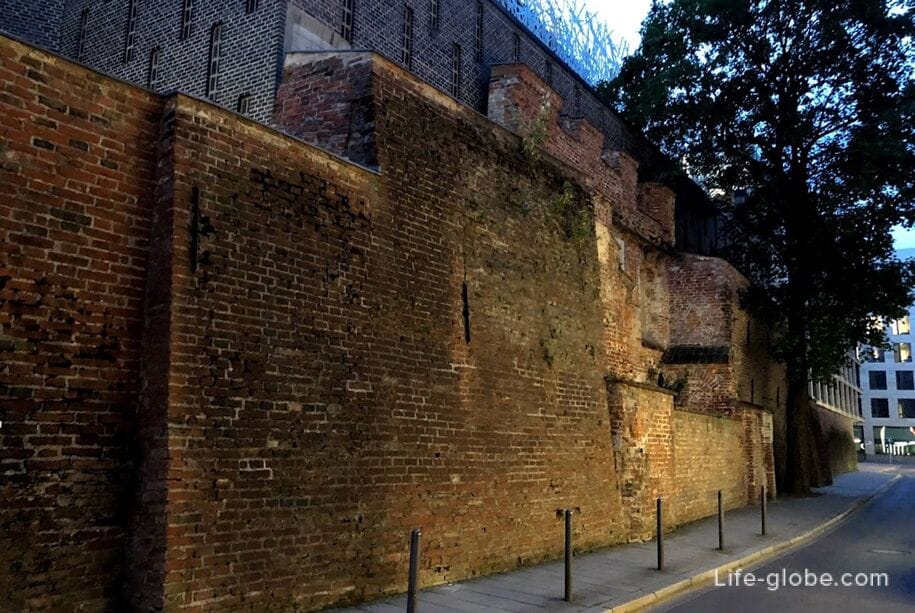
Makstor (Maxtor) - the youngest city gates of Munich. They were erected in 1805, after this place was torn down the city wall.
Gates did not have any defensive value, they only visually covered the street Prannerstrasse (Prannerstraße) from the open countryside to the West.
Now Makstor are two columns located on both sides of the street and surmounted by stone vases. From the columns to the buildings abut two square archway through which pedestrian traffic. On the top bars of the aisles are two stone lions. With these sculptures of lions gate is often called the "Lion gate" or "Gate of the lion" (Löwentor).
The gates are in that place where the end of the street Prannerstrasse is Maximiliansplatz (Maximiliansplatz). Read more about the gates Makstor...
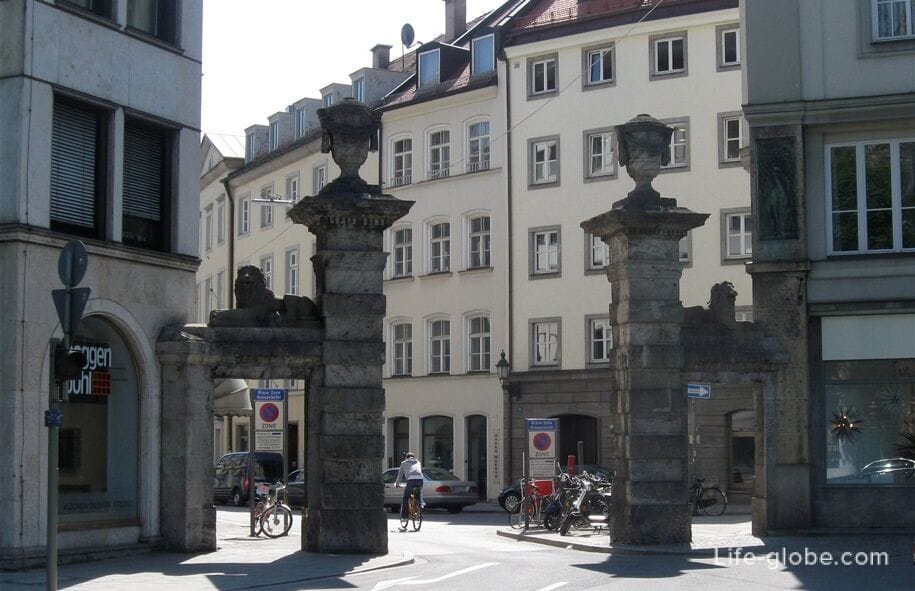
Victory gate (Siegestor) are not and have never been a defensive and an entrance to the city.
Gate is a triumphal arch, created and erected by order of king Ludwig I, the Bavarian in the period from 1843 to 1852.
The gate was originally dedicated to the glory of the Bavarian army. Bavarian troops entered the festively decorated gate after victory in the Franco-German war.
Tregaron triumphal arch is crowned by a large bronze sculptural composition consisting of the statue of Bavaria, seated on a chariot drawn by four lions. On the walls, on all sides of the gate, located reliefs depicting military scenes and typical scenes from the Bavarian areas.
The gate located in the place where the street Ludwigstrasse (Ludwigstraße) and Leopoldstrasse (Leopoldstraße). Read more about the gates of Victory...

The Propylaea (Propyläen) were also not in the literal narrow sense, the gate of the fortifications of the city, but, nevertheless, in a broader sense, they are included in the General list of the gates of Munich.
The Propylaea (or gateway) are the former front passage.
The Propylaea was built on behalf of king Ludwig I in 1862.
The gate is made in purely classic style, with outer Doric columns, a portico with a triangular pediment and two towers. The reliefs and sculptures of the gate is depicted, including scenes from the Greek war and the victory celebration.
Propylaea is located in the centre of Munich, at the address: Louisenstrasse, 31 (Luisenstraße) / Royal square (Königsplatz). Read more on the Propylaea...
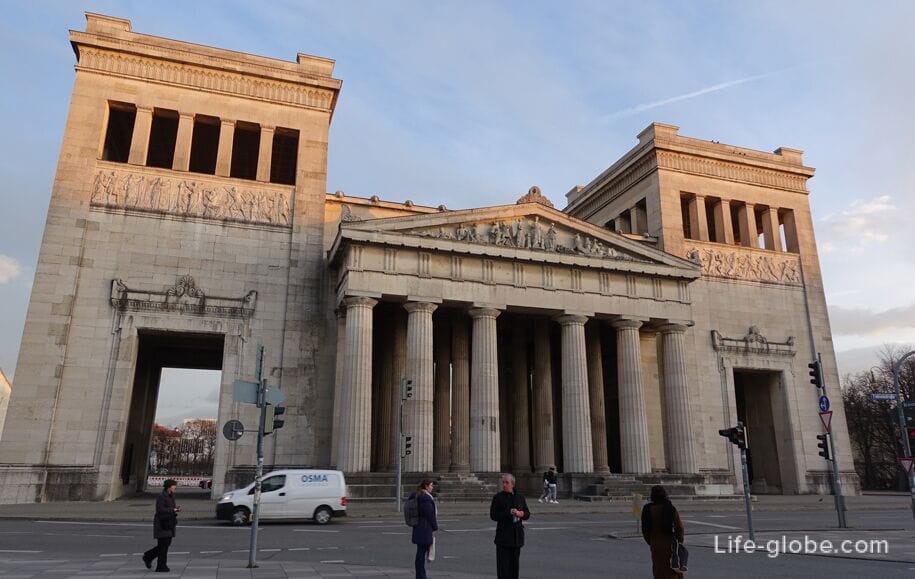
All accommodation in Munich, including in the centre, you can view and book here